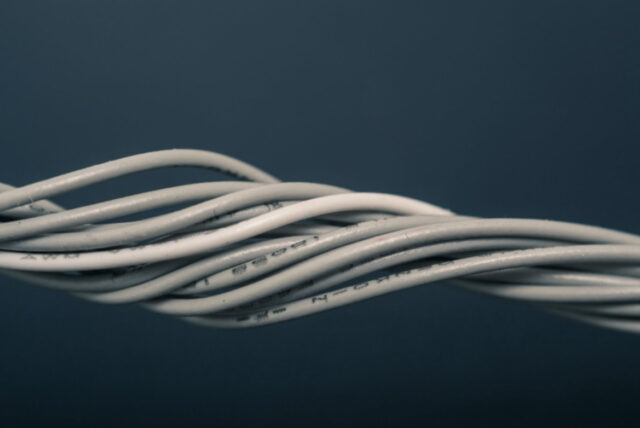All over the home, electronic devices make our lives happier and easier. Whether it’s the coffee machine you use to wake yourself up before your morning commute or the TV that helps you unwind after a long day. Modern lives are almost entirely dependent on electronics, and many of these devices require lots and lots of cables to receive power.
While wireless technology is becoming more popular, most homes still have plenty of wired devices that need to be plugged in somewhere. These may be important to us, but excessive cabling creates a lot of mess and untidiness. If you want to keep your home tidy and your devices safe and secure, you need to practice good cable management.
What is Cable Management?
Cable management is the process of storing and organising your loose wires and cables. It’s relatively simple to do and makes a big difference to your home and your devices. Because cables can easily get tangled up, they can become damaged if not secured properly. Loose cables can also be a safety hazard, creating a risk of tripping over.
Ideally, your cables should all be out of sight and secured safely to prevent them from getting damaged. This allows you to still use them while also keeping your home tidy. There are lots of different ways to organise your cables, but cable management tools make it a lot easier.
Cable Rods and Conduits
One of the best ways to keep cables and wires out of sites is by using conduits. These are sleeves which protect the outside of the cables while also allowing you to cover them up. Cables rods are used to feed your cables through the conduit, keeping them out of site and ensuring they’re not tangled.
You can use conduits all over your home, and cable rods are ideal for feeding wires through holes and other spaces. Typically, these will be installed by construction workers or electricians, but you can also do it yourself.
All over your home, you can run conduits along the walls to prevent cables from needing to be cross-crossed throughout each room. Make sure your cables are suitable length, and check that there’s enough space for all of the cables that you need. While the conduit itself is still visible, it’s much better than having lots of loose wires.
Under-the-Desk Storage
Desks often feature more wires and cables in a small space than anywhere else in your home. Your computer and any other devices you use to access the internet and get online all require lots of different cables. If you work from home, you know the importance of keeping your desk tidy.
While the amount of cables needed might be unavoidable, you can definitely do something about how you organise them. Under-the-desk storage solutions and trays are ideal for holding your wires in one place. You can also use ties and clamps to secure them in place.
One of the biggest issues with having lots of wires altogether is that they can easily become tangled. Using ties is a great way to avoid this, securing a bunch of cables together and preventing them from wrapping around each other.
Securing Your Cables for Travel
If you need to move your work equipment from place to place, you’ll need a way to safely transport all of your devices and cables. For example, if you want to try out the digital nomad life or you simply want to bring your work with you on your travels.
For travelling and avoiding tangled cables, it’s recommended that you get your own travel bag for all the cables you need. However, lots of laptop cases also have built-in compartments that can store a variety of different sizes of wires.




